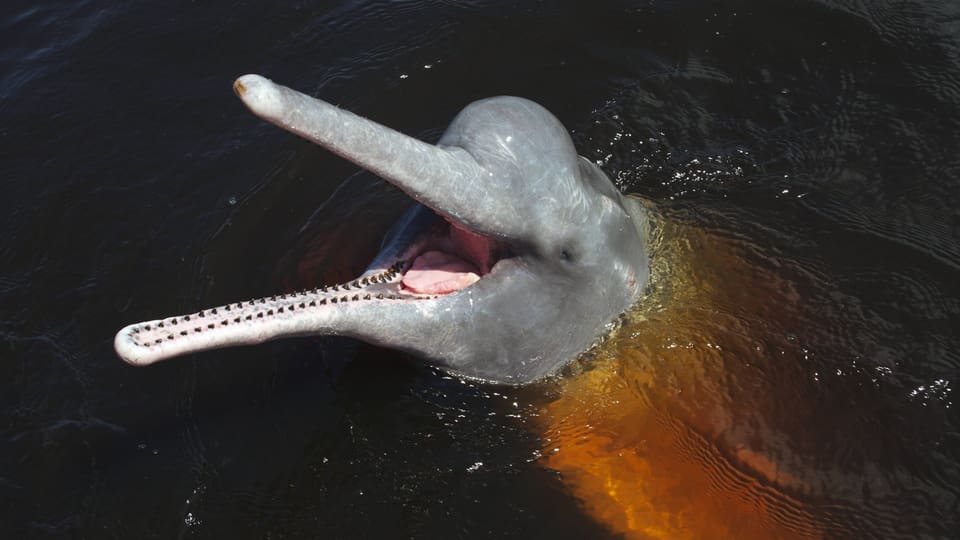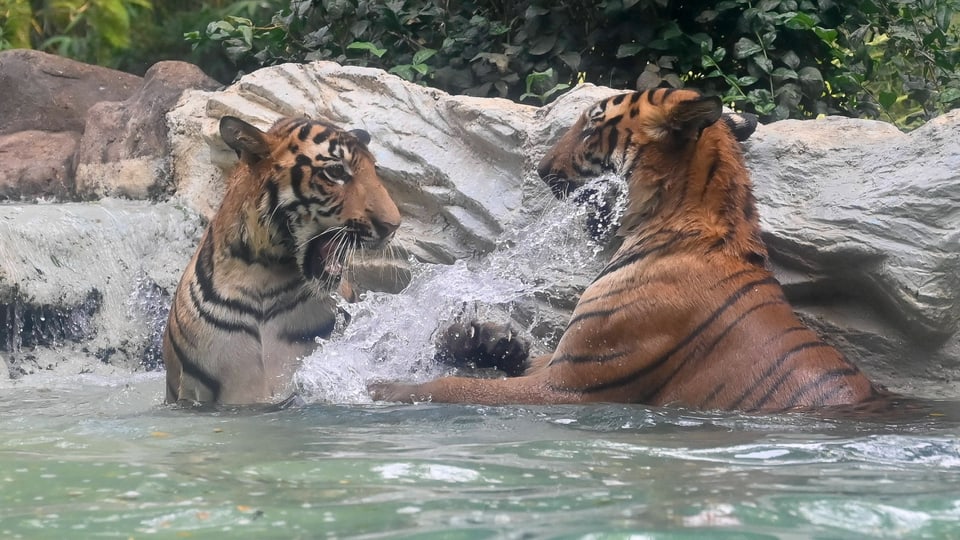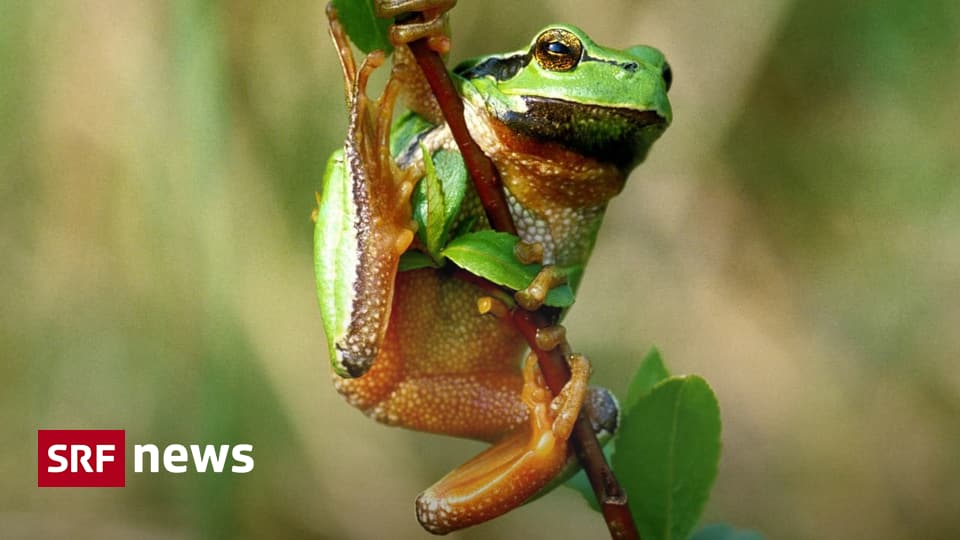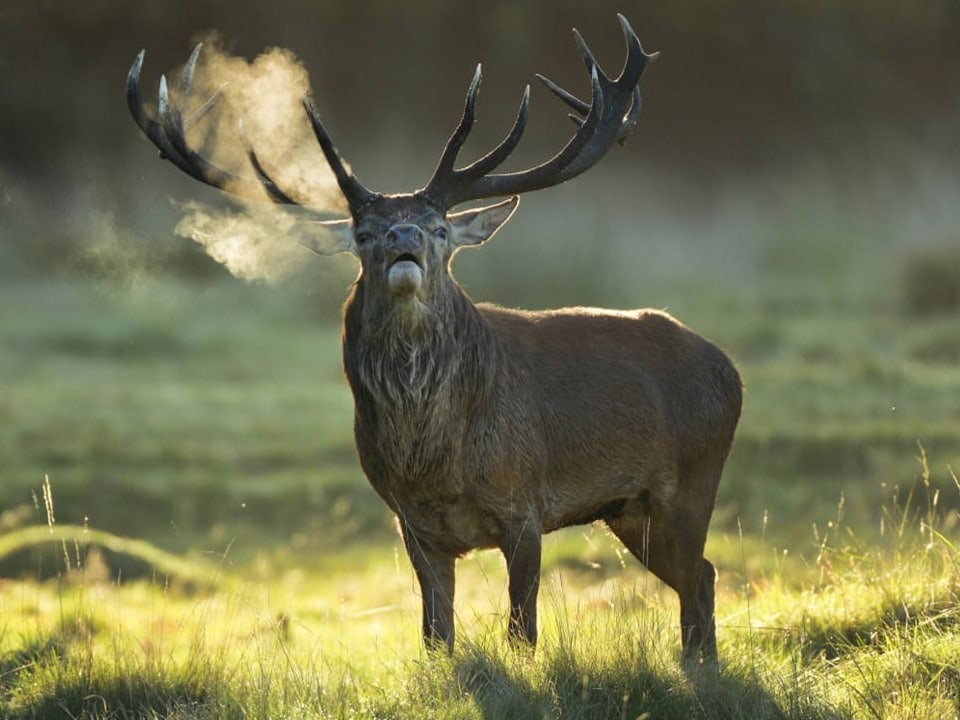- In terms of species protection, environmental foundation WWF has had mixed results about the year coming to a close.
- According to the WWF, the tree frog and red deer were among the winners in this country.
- Internationally, the numbers of Indian leopards and African rhinos, among other species, are increasing.
It is small, green, and has a black stripe on each side – the tree frog. More than 15 years ago, they were in danger of extinction in this country, but today they are considered only “endangered.”
According to the WWF, the tree frog is one of Switzerland's winners this year. For the following reasons: The decline of this species has slowed thanks to support measures. This is what the Environmental Protection Organization writes on its balance sheet with the aim of protecting species.
WWF also counts red deer, which were wiped out in the mid-1800s, among its winners. Today there are about 40,000 copies again. By reintroducing wolves, they would also have a natural enemy that would regulate the population – and thus the health of the forests.
The planned shooting of wolves puts this in jeopardy again, according to the environmental foundation. Roi du Doubs was one of the losers in this country, declared the WWF. “The fish, which is about 20 centimeters long, is rare,” the statement said. “During population screening this year, only one female was found in Switzerland.”
The smooth snake is also critically endangered. Of the 16 species of reptiles found in Switzerland, more than 80% are on the red list.
Fewer lions and river dolphins
Around the world, lions in Africa, Humboldt penguins, Amazon river dolphins and amphibians were among the losers, according to WWF. Salamanders are the most threatened group of amphibians.
Penguins in Chile were particularly affected by the outbreak of bird flu, and dolphins were likely affected by water temperatures exceeding 39 degrees at times: “Ten percent of the river dolphin population in Lake Teifi died in just one week.” The problem there: a century-long drought.

legend:
Amazon river dolphins are threatened with extinction. This is mainly due to higher water temperatures.
Image/perspective
According to the WWF, these lost species represent thousands of other species threatened with extinction. The International Red List now identifies more than 44,000 species of animals, plants and fungi as threatened with extinction.
More tigers and rhinos
On its balance sheet, WWF lists India's tigers, African rhinos and bison in the Caucasus as winners. A year ago, white rhinos were still among the losers, but now there is talk of an increase in the numbers of these animals for the first time after a decade of decline.
It was said that the number of tigers in some Asian countries “has also seen a positive increase.” In India there are especially many of them with more than 3,600 copies.

legend:
More than half of the remaining tigers on Earth live in India. Like these two one-year-old tigers playing in the water at a zoo in India.
Imago / Hindustan Times
According to the foundation, the main reasons for the decline in the numbers of many species are habitat destruction, poaching, overexploitation, invasive species, pollution, and the climate crisis. “The main factors fueling the current extinction of species are human-caused, whether through habitat loss, global warming, poaching or poaching.
“We humans are both perpetrators and victims,” says René Caspar, international species conservation officer at WWF Switzerland.

“Typical entrepreneur. Lifelong beer expert. Hipster-friendly internet buff. Analyst. Social media enthusiast.”








More Stories
Ryanair boss wants planes to be made available for repatriation
A boy finds a rare Lego octopus from a container that fell into the sea in 1997
SRF News Contest of the Week – News